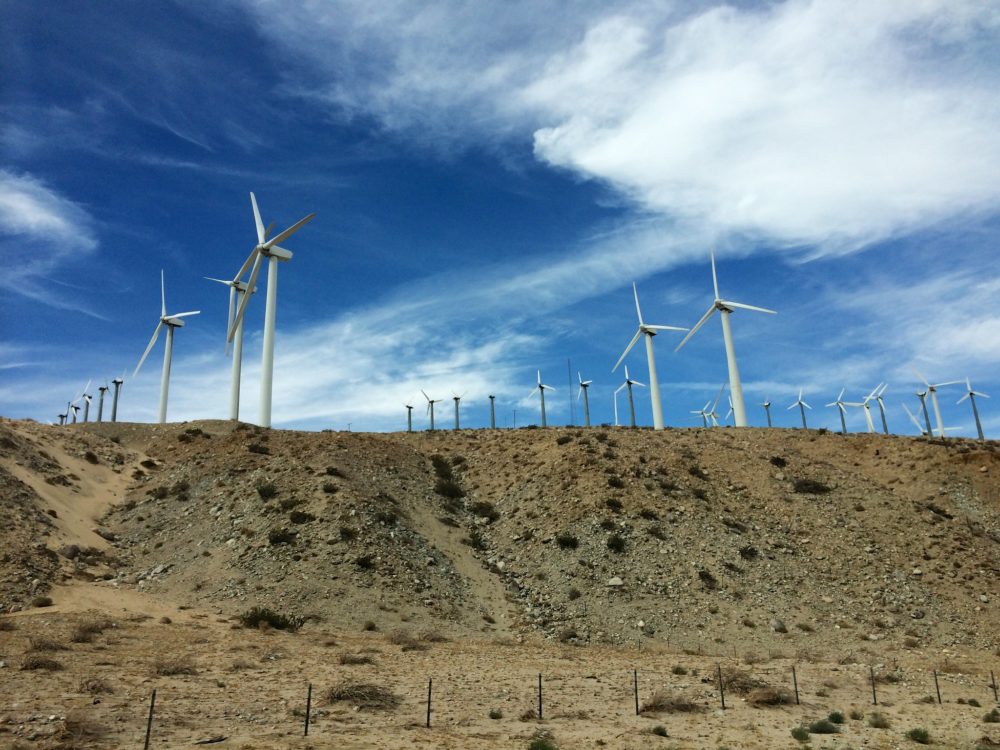Production has taken a huge hit across India, with government lockdown measures forcing factories to close

The IEEFA's Vibhuti Garg believes there is a need to focus spending on plans that “cut greenhouse gas emissions as well as boost the economy” (Credit: Flickr/Homeandgardners)
Wind power developers in India are set to face “significant downtimes” following the impact of the coronavirus pandemic, says an analyst.
The disease, which emerged in December in Wuhan, China, has so far inflicted a significant impact on many industries and now wind power supply chains across India appear to be one of the latest causalities.
The impact of the virus appears to be affecting the wind power industry on a global scale, as research released by BloombergNEF earlier this month suggested the disruptions could plunge what was a rapidly emerging source of energy into “unprecedented uncertainty”.
Production has taken a huge hit across India, with lockdown measures imposed by the government forcing factories to close and restricting the way businesses operate.
Somik Das, senior power analyst at data and analytics firm GlobalData, said that to support the efforts of the authorities, major wind power technology manufacturers such as Vestas, Siemens Gamesa and Inox Wind have halted activities across all plants in the country.
“The plants had been a viable alternative to China and Spain and now the lack of production is expected to create disruptions in supply, with significant consequences on the global market,” he added.
Impact of coronavirus on wind power developers in India
The lack of production across Indian supply chains is expected to push up wind power manufacturing costs, according to GlobalData.
It has forecast that during the first quarter of 2020, the price of wind turbines in India will rise from $864 per kilowatt (kW) to about $904 per kW – before peaking again in the second quarter to reach $943 per kW.
Due to the lockdown restrictions, GlobalData believes that if there is to be a recovery in the market, it will only happen towards the end of the second quarter.
But with exports “significantly influence manufacturing trends”, the recovery of overseas markets could play a “crucial role in reducing the pressure” on India’s prices.
Initial estimations by the firm show that prices are set to decline during the third quarter to $923 per kW and $902 per kW in the fourth quarter – but those figures remain higher than across the same period in 2019.

A positive for the wind supply chain is that it is more diversified than solar PV, an industry that relies heavily on imports coming out of China, where manufacturers are only just starting to recover from the coronavirus outbreak.
The major production hubs for turbines are the US, Germany and Denmark, but with the virus spread across those regions, stringent lockdown measures could continue for an extended period.
Das believes the implications this could have on the global market are likely to contribute to the rise in the prices of wind turbines in India.
He adds that the likelihood of delays in wind auctions and tenders will also “certainly impact the recovery rates of turbine manufacturing plants in India”.
“The ongoing pandemic is an evolving issue and a shortfall in manufacturing capacity will affect the country’s push for wind deployment,” he added.
“Until a balance between supply and demand is achieved, manufacturers in India are expected to face a tough phase with substantial downside risk.”
Impact of coronavirus on global wind power growth
In recent years, the global wind power industry has gone from strength to strength, cutting costs and becoming a key asset in the clean energy transition – with interest from investors continuing to grow.
According to the Global Wind Energy Council (GWEC), last year was the second-best on record for new wind capacity installations, with 60.4 gigawatts (GW) added to the international fleet – a 19% year-on-year increase.
Building on this success, the organisation anticipates more than 355GW of additional capacity being brought online during the next five years – although it has cautioned that its outlook would “undoubtedly” be impacted by disruptions caused by the pandemic.
BloombergNEF believes the impact on the industry could be significant, following supply chain disruptions, labour shortages and delays to tight construction schedules.
The organisation’s latest report stated: “Informal letters warning of the potential need to trigger force majeure contract clauses are becoming commonplace, passing along the value chain from component suppliers to financiers.
“The extent to which construction has already been disrupted differs greatly between markets. Work has reportedly stopped on many projects in France but is ongoing in other locked-down countries such as Spain.
“Delays to certain construction tasks are causing chain reactions in project timelines, challenging conventional construction logistics. For example, scheduling a turbine foundation concrete pour is impossible amid uncertainty over both the supply of raw materials and labour.”
It also warned of an emergent “timing crisis” in markets – particularly China and the US – where stalled projects risk missing out on government subsidy deadlines.
Maintenance scheduling is also proving a stumbling block, as a shortage of technicians resulting from social distancing guidelines is making it more difficult for turbine operators to assess the health of their infrastructure.
